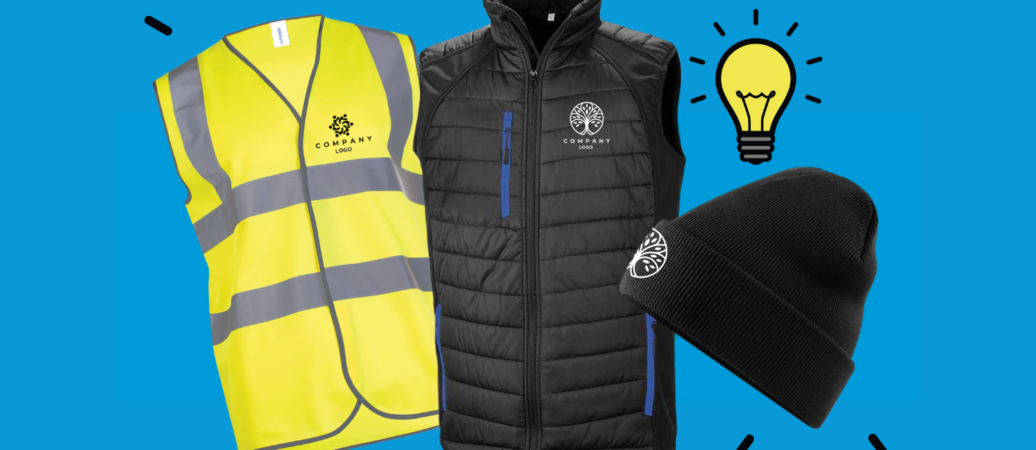What Makes Branded Clothing Ideal for Sensitive Skin?
Wiki Article
The Relevance of Lasting Clothes: Just How It Affects the Atmosphere and Your Wardrobe
Lasting garments is increasingly acknowledged for its important function in reducing the ecological impact of the fast fashion business. By concentrating on green products and ethical manufacturing techniques, it deals with pressing environmental concerns. This change not just profits the earth yet also affects consumer selections, bring about a more thoughtful strategy to wardrobe monitoring. Comprehending these characteristics elevates important inquiries about style's future and individual obligation in shaping it.The Ecological Footprint of Fast Fashion

Benefits of Sustainable Products
Sustainable products offer significant benefits, especially through environment-friendly material selections that reduce environmental harm. These products additionally show resilience and longevity, decreasing the requirement for constant substitutes. Consequently, they contribute to a more sustainable garment industry and promote responsible consumer habits.Eco-Friendly Material Selections
While the fashion market has long been connected with rapid fads and ecological harm, the rise of environmentally friendly textile selections offers a transformative chance. Lasting products such as natural cotton, hemp, and Tencel have actually acquired popularity because of their lower ecological influence. These textiles are typically generated without hazardous pesticides and call for much less water, reducing their carbon impact - Branded Clothing. In addition, several eco-friendly fabrics are eco-friendly, contributing to a circular economic climate by minimizing waste. Picking lasting materials not only sustains environmentally responsible methods however also promotes healthier ecological communities. As customers come to be a lot more knowledgeable about their acquiring power, the need for environmentally friendly textiles urges brand names to introduce and take on even more lasting manufacturing methods, inevitably benefiting the world and future generations
Sturdiness and Longevity Benefits
Several consumers are increasingly identifying the sturdiness and longevity advantages of lasting materials in their clothing options. Unlike traditional textiles, lasting products such as organic cotton, hemp, and recycled polyester are crafted to hold up against wear and tear, resulting in garments that last longer. This minimized regularity of replacement not just saves consumers cash with time but also diminishes waste generated by quick fashion. On top of that, sustainable garments often employs environmentally friendly production methods that enhance textile toughness, adding to a decrease in the general carbon footprint. By buying durable apparel, customers can grow a more lasting wardrobe while appreciating top notch items that preserve their visual and functionality gradually. Durability and durability stand as essential advantages of picking lasting materials.Lowering Waste Via Sustainable Practices
Reducing waste in the style industry can be achieved through cutting-edge methods such as upcycling and repurposing products. Furthermore, adopting minimal wardrobe methods urges customers to focus on top quality over amount, ultimately decreasing apparel consumption. Together, these approaches contribute considerably to a much more lasting garments design.Upcycling and Repurposing Products
Upcycling and repurposing materials have arised as innovative methods in the fashion business, changing thrown out fabrics right into valuable brand-new items. This method not only reduces waste however also urges imagination and originality in apparel layout. By taking old garments and materials, designers can develop unique pieces that reflect personal style while reducing the demand for brand-new sources. Furthermore, upcycling usually calls for much less power and water contrasted to standard manufacturing procedures, substantially reducing the ecological footprint of style. As consumers end up being a lot more familiar with sustainability, the appeal of upcycled apparel proceeds to climb, advertising a round economy. Eventually, these practices add to a much more lasting future, where style prioritizes ecological health over rapid production and consumption.
Minimal Closet Strategies
As people increasingly seek to minimize their environmental impact, adopting minimal closet approaches has actually gained traction as a reliable approach to sustainable fashion. These techniques stress top quality over quantity, motivating consumers to curate a smaller sized collection of versatile, resilient garments. By concentrating on ageless pieces that can be blended and matched, people can minimize the regularity of purchases and eventually lower waste.Additionally, minimalism Web Site promotes mindful usage, prompting buyers to assess the ethical and ecological implications of their choices. This approach not just promotes an extra lasting lifestyle but additionally streamlines day-to-day decision-making pertaining to clothes. As people welcome minimal principles, they contribute to a fashion society that values sustainability and liable consumerism, eventually bring about a more eco-conscious society.The Function of Honest Labor in Sustainable Style
While numerous customers are progressively knowledgeable about the environmental consequences of their clothes selections, the relevance of honest labor practices in sustainable fashion can not be neglected. Honest labor encompasses fair salaries, safe working problems, and regard for employees' legal rights, developing the backbone of responsible fashion manufacturing. Brands that prioritize honest labor not just boost neighborhoods however also established a requirement for responsibility in the industry.Moreover, the integration of honest practices cultivates openness, enabling customers to make educated selections concerning their acquisitions. This method contrasts greatly with quick style's unscrupulous labor versions, which commonly prioritize profit over individuals. By sustaining companies committed to moral labor, consumers add to a system that values human self-respect along with environmental sustainability. Moral labor is not just an add-on; it is important to the broader objective of sustainable fashion, making sure that the pursuit for eco-friendliness does not come at the cost of human rights.The Impact of Lasting Apparel on Carbon Emissions
Lasting apparel has the possible to greatly reduce carbon discharges related to the fashion sector. Standard garment production adds significantly to greenhouse gas emissions, mostly because of energy-intensive production processes and the usage of non-renewable resources. In comparison, sustainable style concentrates on green materials, such as organic cotton or recycled fibers, which frequently require less power to produce.Moreover, lasting brands tend to embrace a lot more effective production techniques, lessening waste and reducing general discharges. By focusing on resilience and timeless design, sustainable clothing motivates consumers to get much less often, more minimizing the carbon impact connected with overconsumption.Additionally, several lasting brand names are devoted to openness in their supply chains, making it possible for customers to make educated options that line up with their values. Ultimately, shifting in the direction of sustainable clothes can result in a significant reduction in carbon emissions, adding to a much healthier world and a more lasting future for the fashion business.Supporting Regional Economies With Lasting Choices
The change toward lasting apparel not just addresses ecological issues yet additionally significantly advantages neighborhood economic situations. By choosing lasting style, consumers commonly sustain little organizations and local artisans, boosting neighborhood durability. These ventures generally operate a smaller range, focusing on workmanship and ethical practices over mass production.Investing in locally made lasting apparel cultivates task development and promotes economic growth within neighborhoods. As consumers come to be much more knowledgeable about the environmental influence of their purchases, they significantly seek out products that show their values. This demand encourages neighborhood producers to take on lasting practices, contributing to a circular economy.Moreover, sustaining regional services lowers transport emissions, aligning with eco-conscious consumer behavior. The interconnectedness of lasting apparel and regional economic climates emphasizes the vital role that specific options play in advertising both financial and ecological health. By promoting these local connections, communities can prosper while likewise working towards an extra sustainable future.Transforming Your Closet: Tips for a Lasting Closet
As people look for to reduce their ecological impact, transforming a wardrobe into a lasting closet becomes a necessary action. One reliable approach is to review existing clothing, maintaining just products that are put on regularly and that align with sustainability objectives. Focusing on quality go to my site over quantity is crucial; purchasing sturdy items from environmentally friendly brands can considerably lower waste.Additionally, including pre-owned items can rejuvenate a closet while decreasing environmental damages. Organizing apparel swaps with friends or donating unused things can additionally advertise sustainability.When buying, individuals must seek products that are natural, recycled, or eco-friendly, and prevent rapid style sellers - Branded Clothing. Lastly, exercising mindful usage by thoughtfully considering each acquisition can add to a more sustainable way of living. By applying these ideas, one can produce a wardrobe that mirrors personal design while supporting ecological stewardshipRegularly Asked Inquiries
Exactly How Can I Identify Sustainable Clothes Brands?
To determine lasting garments brand names, one ought Home Page to investigate materials utilized, look for accreditations like Fair Trade, and take a look at the brand name's transparency regarding their manufacturing processes, labor practices, and environmental influence, ensuring green and ethical practices are focused on.What Are the Expenses Related To Sustainable Fashion?
The prices related to sustainable style can differ substantially. Greater production expenses, ethical sourcing, and green products usually result in increased market prices, which might prevent some consumers while attracting eco aware shoppers.Can Sustainable Clothing Be Stylish and stylish?
Lasting clothes can undoubtedly be fashionable and elegant. Developers progressively prioritize ingenious materials and honest manufacturing methods, confirming that fashion and sustainability can exist together. Customers now have diverse choices that blend visual appeals with environmental awareness.Exactly How Does Laundering Clothes Affect Their Sustainability?
Cleaning clothing greatly impacts sustainability by consuming water and power, contributing to contamination, and causing microplastic release. Frequent washing can weaken materials, reducing their lifespan and raising the requirement for substitutes, inevitably exacerbating ecological concerns.What Is the Life Expectancy of Lasting Clothing Contrasted to Rapid Style?
The life-span of lasting clothes normally exceeds that of rapid fashion items, often long lasting a number of years as a result of high quality materials and craftsmanship. On the other hand, fast fashion garments might deteriorate swiftly, requiring even more frequent substitutes. Sustainable apparel is progressively identified for its critical role in minimizing the environmental influence of the rapid fashion sector. While numerous customers are increasingly aware of the environmental repercussions of their clothes selections, the value of moral labor techniques in sustainable fashion can not be neglected. Branded Clothing. Sustainable garments has the potential to significantly lower carbon exhausts connected with the fashion sector. In contrast, lasting fashion focuses on eco-friendly materials, such as organic cotton or recycled fibers, which often require less energy to produce.Moreover, lasting brand names tend to adopt much more reliable manufacturing practices, decreasing waste and lowering total discharges. By focusing on longevity and timeless layout, lasting garments encourages consumers to get much less often, more reducing the carbon impact linked with overconsumption.Additionally, several sustainable brand names are dedicated to openness in their supply chains, enabling customers to make educated selections that align with their valuesReport this wiki page